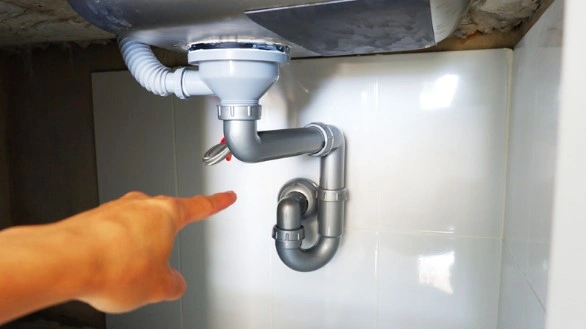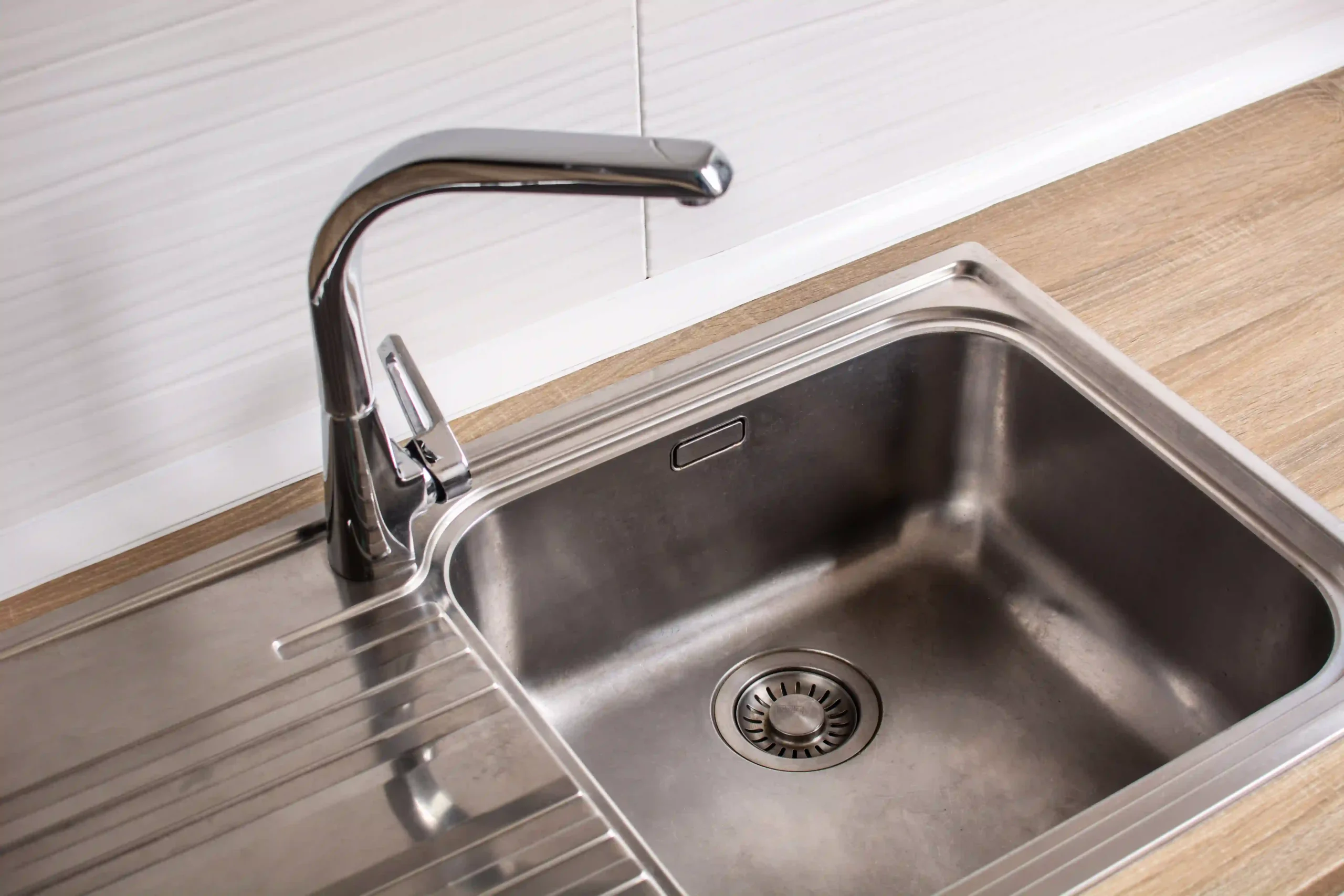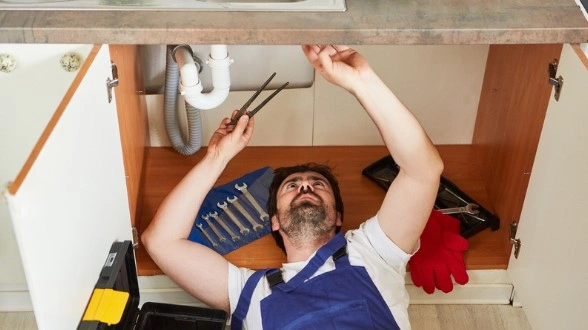Although putting in a kitchen sink drain might seem tricky, with the right tools and some know-how, you can tackle this do-it-yourself project on your own. The basic steps how to install a kitchen sink drain begin with gathering the necessary tools to complete the installation. Much of this labor is the same for both avid DIYers and those attempting in-home plumbing fixes for the first time, breaking down tasks in a straightforward manner that promises a home project of professional-grade quality that doesn’t require hosing down the plumber afterwards.
It helps if you always have all the tools and supplies you need on hand. You’ll also need a kitchen sink drain kit to catch water during the operation, a wrench, plumber’s tape, silicone sealant, and a bucket. Be sure your water supply is off before installation and the sink area is arid and clean.
Next is removing the old drain if you are replacing an existing one. This often means carefully unscrewing the drain assembly under the sink. Remove debris or old sealant that could prevent the new drain from fitting snugly. Clean the sink thoroughly before laying the new drain if the old one is gone.
Prevent leaks by applying plumber tape around the threads in the new kitchen sink drain installation. To ensure a tight, leak-proof fit, follow the instructions on your drain kit. It is also essential to seal the drain with silicone sealant to prevent water leakage around the edges.
Reattach the drainpipe and inspect the sink to see if leaks exist once your new drain is firmly nearby. If done correctly, your kitchen sink drain will be as functional as earlier. Afterwards, this guide how to install a kitchen sink drain .
Contents
How to Install a Kitchen Sink Drain: A Step-by-Step DIY Guide
Installing a kitchen sink drain is an essential plumbing skill that can save you both time and money. Whether you’re a homeowner looking to replace an old drain or a DIY enthusiast eager to take on your first plumbing project, this step-by-step guide will show you exactly how to install a kitchen sink drain with ease. By following these simple instructions, you’ll not only avoid the cost of hiring a plumber but also gain a valuable skill for future home improvement projects.
Step-by-Step Guide
Step 1: Gather Your Tools and Materials
Before you start, ensure you have everything you need to install a kitchen sink drain. You will need plumber’s tape, a kitchen sink drain kit, silicone sealant, a wrench and a bucket. Preparing everything ensures that the installation takes place smoothly and eases the process.
Step 2: Remove the Old Drain
If you are replacing an outdated drain, the first chore is to get rid of the current assembly. With your wrench, unfasten the drain flange and pipes beneath the sink. Have a bucket handy to catch any water that is in the pipes. Be extra careful to remove any garbage or old sealant that would make installing the new drain more complicated.
Step 3: Clean the Sink Area
The area has to be thoroughly cleaned after the old drain is removed. This ensures a tight seal & will prevent any leftovers from the old install from affecting the new.
Step 4: Install the New Drain Kit
The new drain kit should be installed with the rubber gasket pressing tightly into the sink. Put plumbers’ tape over the threads if you are connecting the drain. It ensures a snap and prevents leaks.
Step 5: Apply Silicone Sealant and Tighten the Fittings
Dryfit your drain; once determined, apply a bead of silicone sealant around the best edge of your drain, creating a leakproof barrier. You don’t want it too tight so you don’t hurt anything, but make sure the fittings are tight.
Step 6: Reconnect the drainpipe to test for leaks.
Once everything is solidly in place, reattach the drainpipe. Turn the water on and check for leaks. If all seems excellent, congratulations, you’ve completed your DIY kitchen sink drain install.
What tools do I need to install a kitchen sink drain?
To install a kitchen sink drain, you’ll need the following tools and materials:
Kitchen Sink Drain Kit: Typically include the drain flange, stopper, tailpiece and any other parts required for installation
Plumber’s Tape: known as Teflon tape as well—is designed to wrap around threaded pipe connections to prevent leaks, and is
Silicone Sealant: Applied to form a tight seal around the drain flange, silicone sealant prevents water from leaking through.
Wrench: Wrenches allow you to tighten the fittings for the drain and plumbing securely.
Pliers: And especially if the old drain must come out, pliers may be required to tighten or loosen important segments.
Bucket: To catch any water remaining in the drain pipes after the old drain had been removed or as the area was modified.
Screwdriver: A screwdriver may be needed, since some drain kits may require screws to secure the drain pieces.
Pipe Cutter or Hacksaw: If you need to shorten the drainpipe to proper length, then a pipe cutter or hacksaw is really useful here.
Cleaning Supplies: Also, before putting in the new drain, you’ll want some cleaning towels or rags to wipe things down and remove any old sealant or debris.
Use of these equipment will allow you to set up your kitchen sink drain effectively and precisely.
Troubleshooting Tips
Don’t panic if you notice some leak around the kitchen sink drain you have recently installed. One of the most common issues is a weak connection. Tighten the drain fittings snugly to ensure proper plumber tape application, thus preventing leaks. If leaks continue, things might be jammed that would allow for a tight seal, or you might not have used enough sealant. Reseal with silicone sealant and verify that no blockages disrupt the water flow. Be sure to leave behind these troubleshooting techniques to set up your sink drain and ensure it works correctly.
Learn how to install a kitchen sink drain to tackle this do-it-yourself job confidently. These easy guidelines allow you to acquire helpful plumbing skills and save cash on professional services. Regular drain cleaning and leak detection will keep your kitchen sink in pristine working condition for years. Remember that fixing a kitchen sink drain is easier than you would think with time and the right tools!

FAQs:
- Tools required to install a kitchen sink drain
A kitchen sink drain, kitchen sink drain kit, plumber’s tape, wrench, silicone sealant and bucket are just a few of the items available to install a kitchen sink drain. Being prepared with the proper tools will help ensure a smooth and speedy setup.
- How do I remove an old kitchen sink drain before installing a new one?
If you’re replacing an old kitchen sink drain, first use a wrench to free the sink drain flange and pipes underneath the sink. Place a bucket under the drain to catch whatever water may still be in the pipes.
- Can I install a kitchen sink drain myself?
In fact, for novice builders, installing a kitchen sink drain is a perfectly reasonable do-it-yourself operation. An easy to follow, fine arranging manual for install a kitchen sink drain without proficient help.
- Then how can you avoid leaking your kitchen sink drain when you install it?
All connections on a kitchen sink drain need to be tightened to prevent leaks at the time of installation. To create a waterproof seal, wrap plumber’s tape around the threads; around the drain’s rim, put down silicone sealant to prevent water from seeping through.
- How long does it take to install a kitchen sink drain?
Installing a kitchen sink drain usually takes one to two hours, depending on your skill level and whether you are replacing an existing drain. It involves emptying the old drain, preparing the area, placing of new drain, and leak testing.
- Why is my new kitchen sink drain leaking after it was just installed?
If your kitchen sink drain starts leaking after being installed, some common causes may be weak connections, insufficient plumber’s tape or improper silicone sealant application.
Conclusion:
One simple but essential plumbing task that will save time and money is replacing a kitchen sink drain. By following a few simple guidelines, you will be able to confidently tackle this Do It Yourself project and enjoy the satisfaction of completed installation yourself. We hope that this article has equipped you with the knowledge required to properly how to install a kitchen sink drain and avoid common mistakes from preparing the needed tools to leak testing.
Proper planning is essential for success whether you are installing a new one or replacing an already existing one. Before beginning, make sure you have all the necessary tools—a kitchen sink drain kit, plumber’s tape, silicone sealant and a wrench. Correctly removing the old drain, cleaning the area, and applying silicone sealant around the edges of the new drain will ensure a watertight fit and help prevent leaks.
Bear in mind that fitting a kitchen sink drain requires meticulous detail. Although you should not overtighten and risk damaging a seal, secure all fittings tightly. Check that the drain kit also works for your sink, that plumber’s tape is securely wrapped around the threads.
If you notice any problems, such as leaks, breathe easy. Any DIY project will inevitably require some troubleshooting. In many cases, leaks can be resolved simply by tightening connections or applying plumber’s tape and sealant.
Overall, installing a kitchen sink drain is an easy task that can be completed in just a couple of hours with the right tools and a little patience. . This skill will come in handy for your next plumbing repairs and installations, no matter your level of do-it-yourself competence. So take on the challenge; with the right skills, you will soon have a fully functioning kitchen sink up and running, leak- and issue-free.


